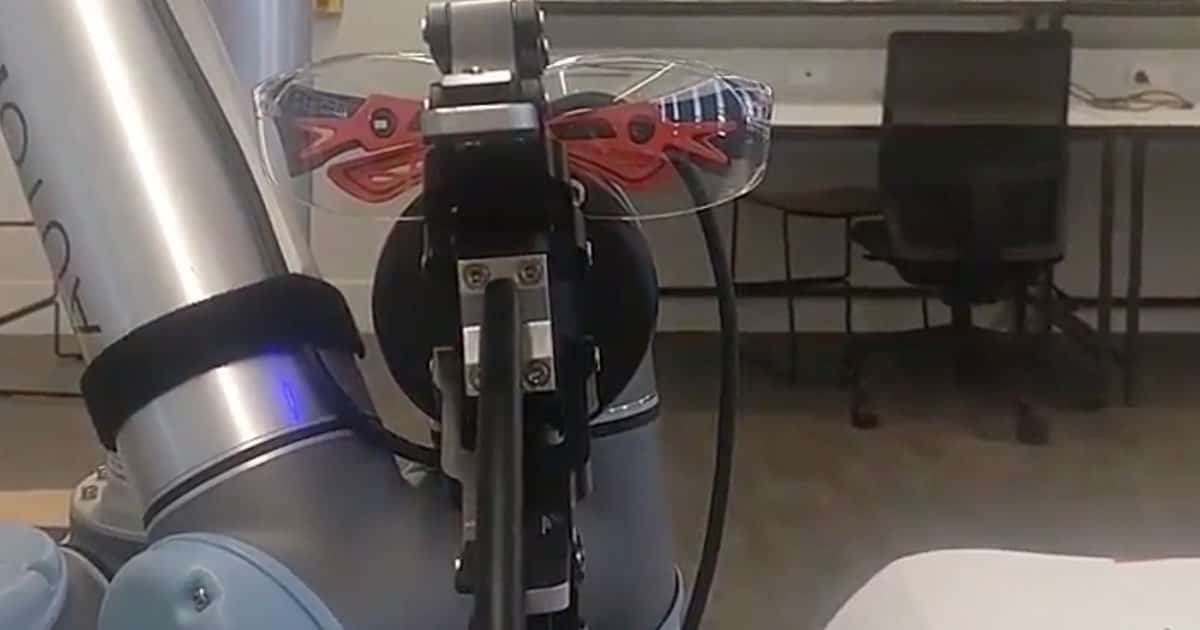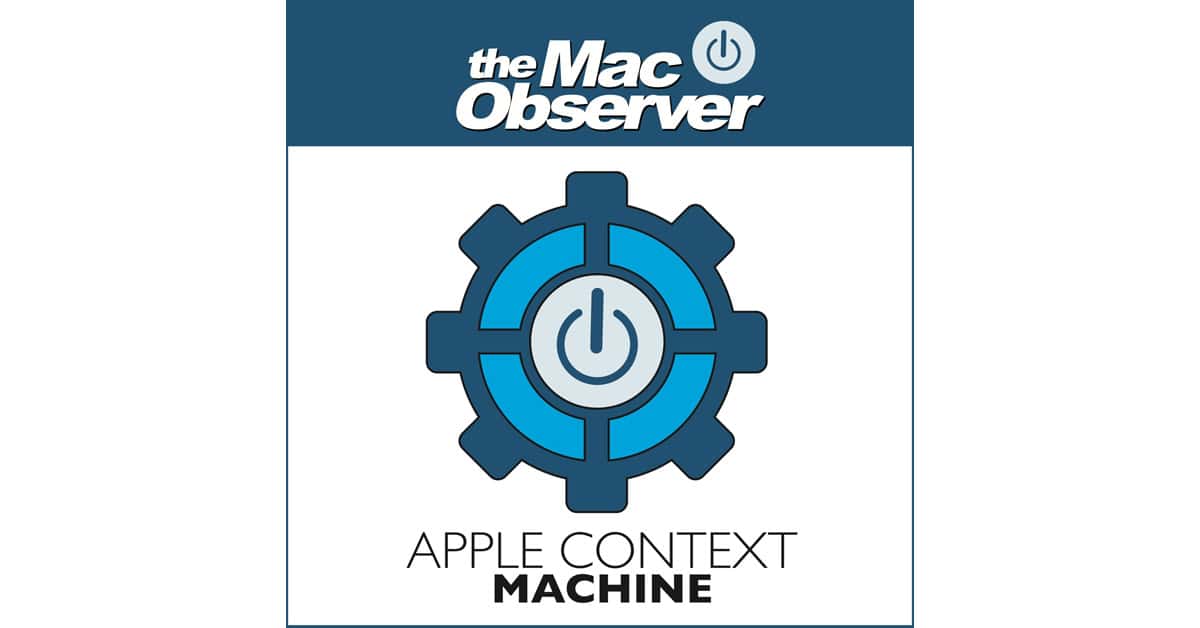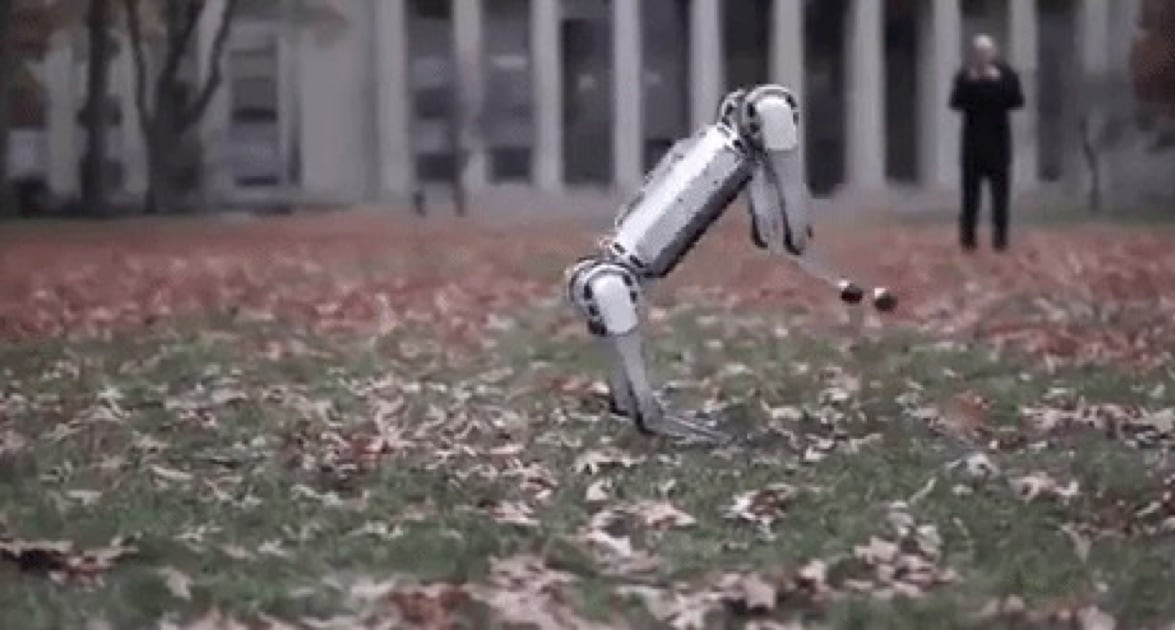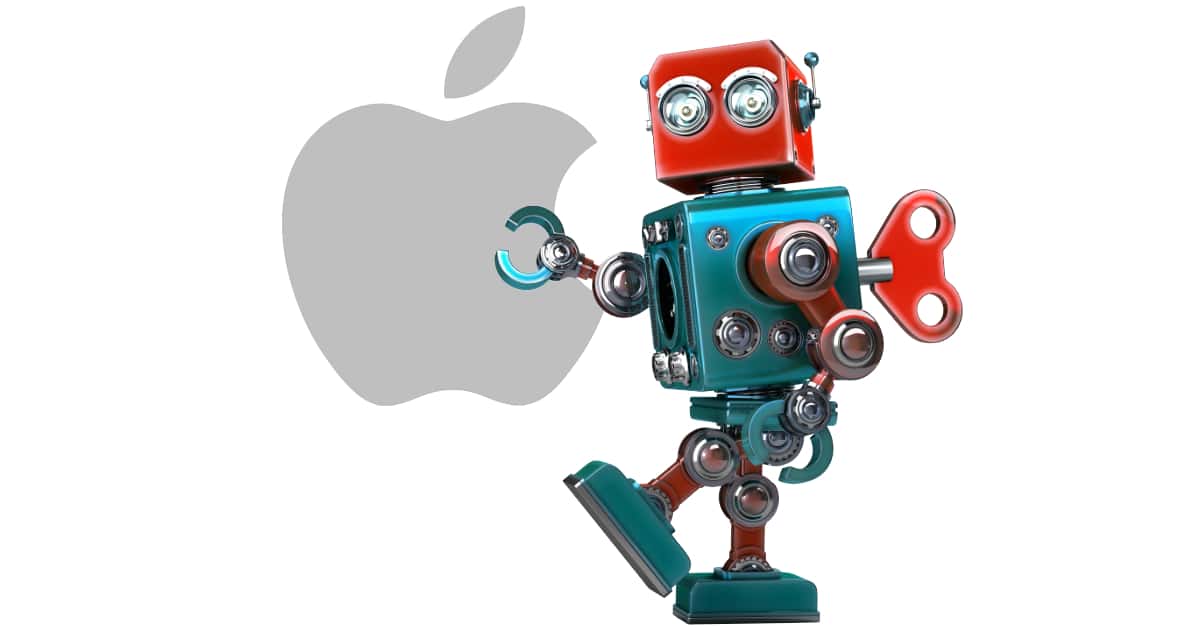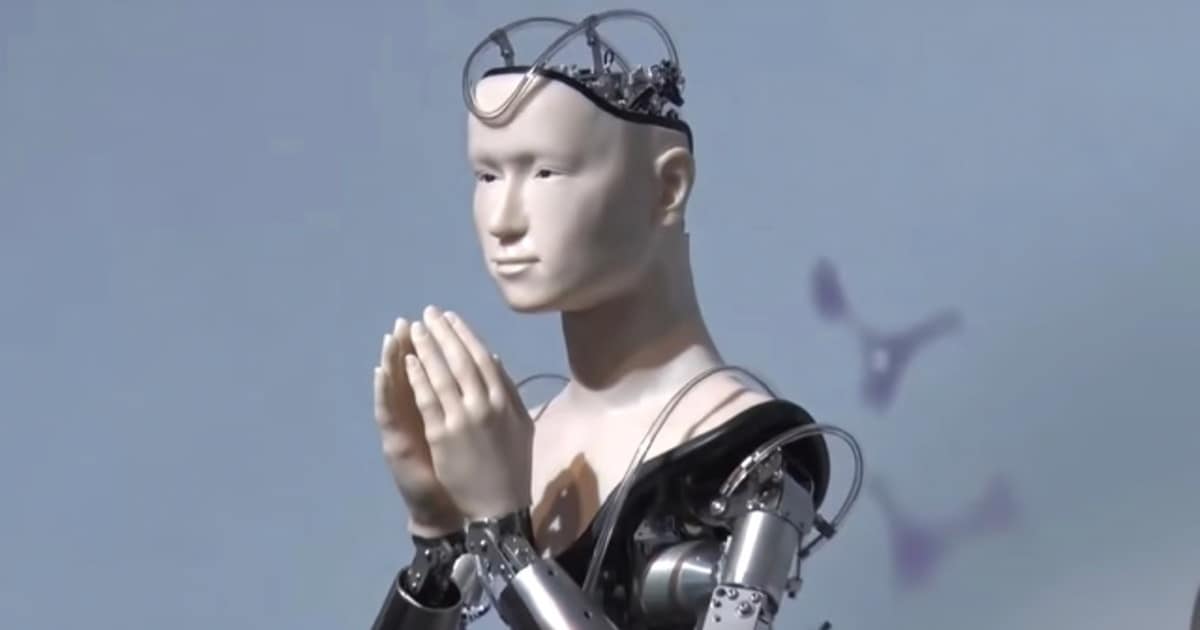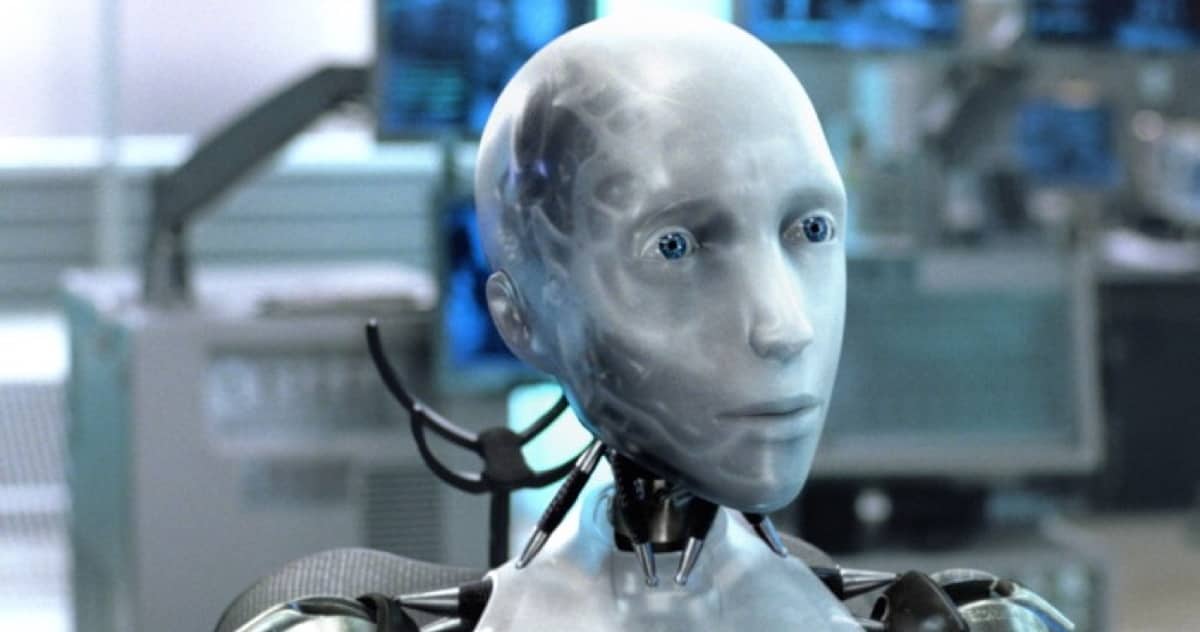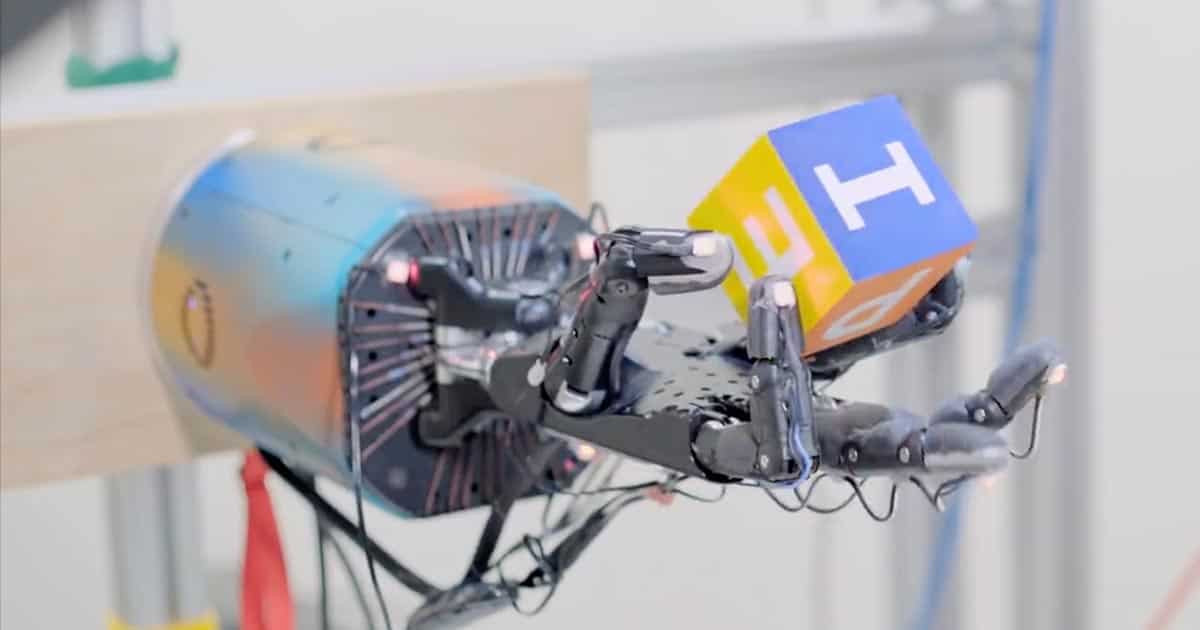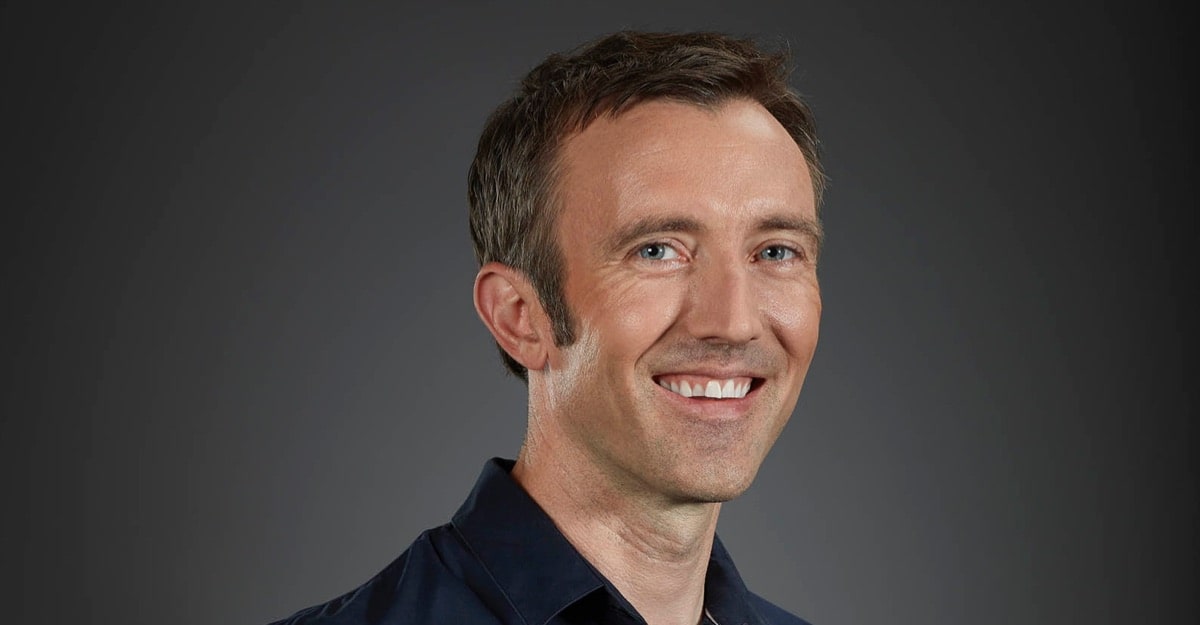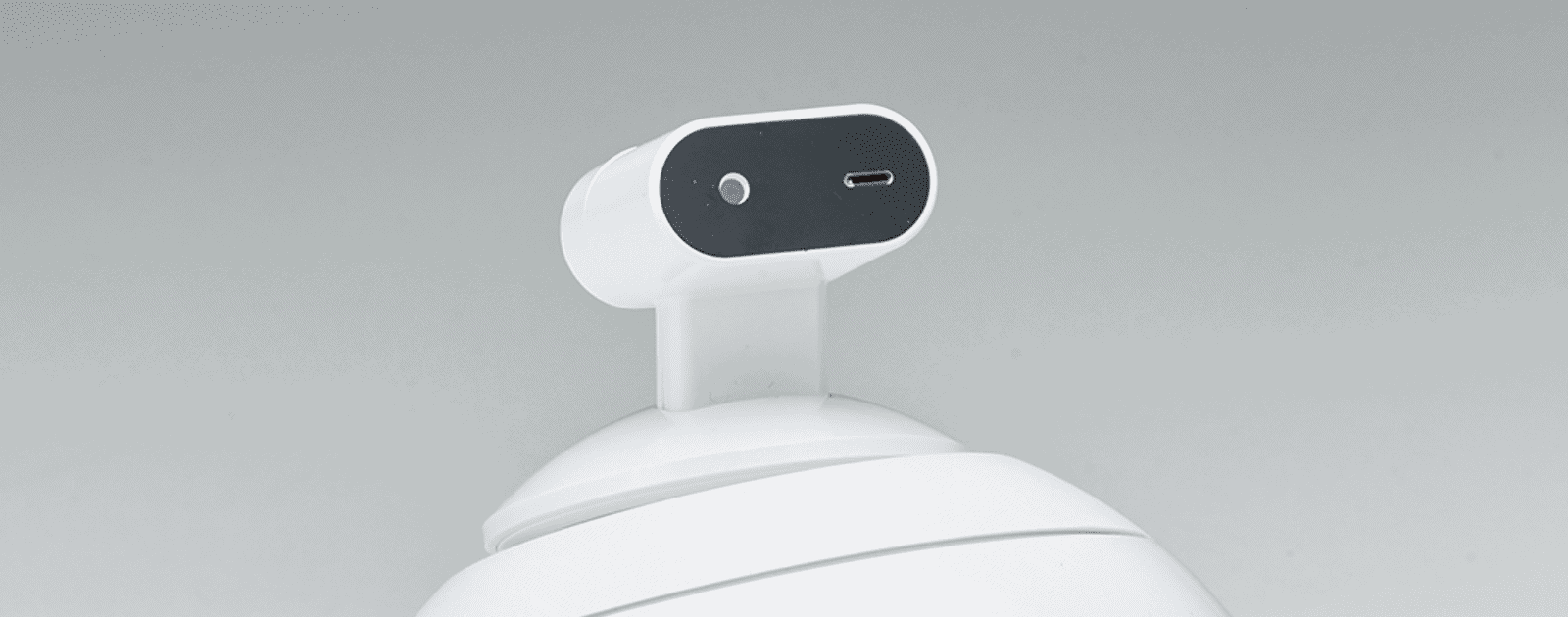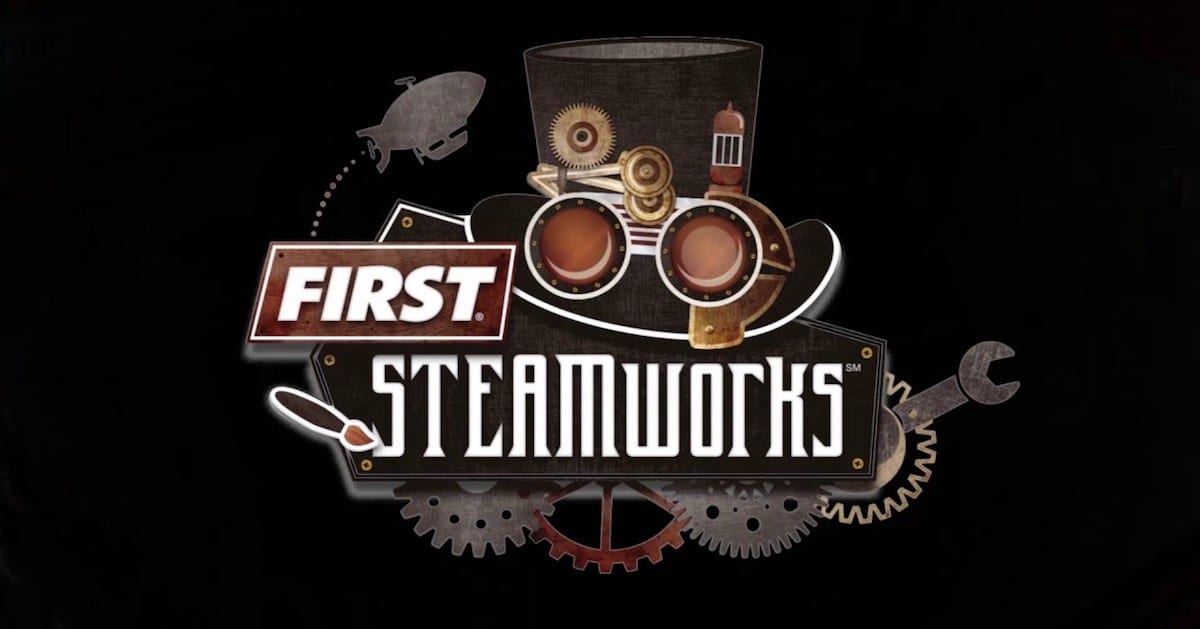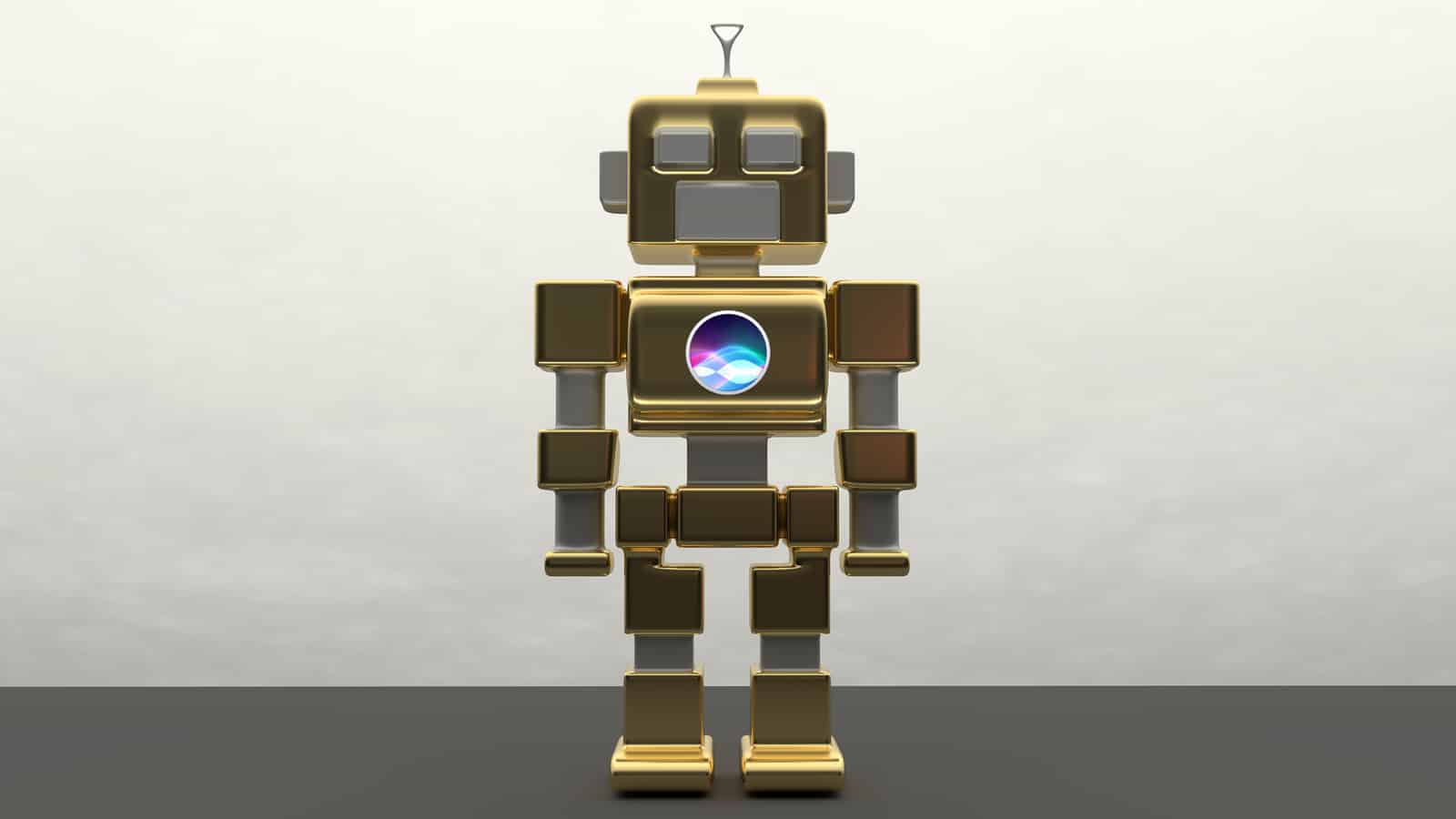Business Insider writes: “Toyota built Cue 3 to demonstrate the robot’s use of “visual feedback” when shooting. Cue 3 can’t run, dribble, or execute the other fundamentals necessary to play alongside humans.” But maybe soon! And the skills demonstrated here will, no doubt, someday be absorbed into more well-rounded robots. (Image credit: BI/Toyota.)
robotics
The Robot Uprising Started with a Mic Drop
All hail nerd humor! This little clip is funny, poignant, and well executed. Note the safety glasses perched atop the robot’s arm to better personify the device. And my favorite thing is the mic drop at the end. Definitely good stuff.
Augmented Reality, Practical Robots, and Modern Cabling, with John Kheit - ACM 505
Bryan Chaffin and John Kheit don their futurist caps and look for the killer app in Augmented Reality. Spoiler: they have different ideas on what form it might take. They also explore the near-term future of practical robots, starting with today’s vacuumbots. They cap the show looking at the slow pace of progress when it comes to modern cabling. Let’s get that Cat 8 and 40 GB/s throughput!
You'll do Backflips When You See This Robot do Backflips
As bits and pieces of robot dexterity come together, soon we’ll see some remarkable robot athletes. It’s a glimmer of things to come. The Verge writes:
MIT is back with the latest version of its Cheetah quadrupedal robot, the Mini Cheetah, and it’s got a new trick up its sleeve: it can do backflips.
Apple's Steady Path Towards Family Robots
Apple is a company we trust. Personal robots can be scary. Who better to earn our trust in robots than Apple?
Robots, Apple Robots, Autonomous Vehicle Robots, and Foldable Phones with John Martellaro - ACM 503
This episode is all about robots! Apple robots, military robots, delivery repots, preacher robots, manufacturing robots, and self driving car robots! Bryan Chaffin is joined by guest host John Martellaro to deep into what’s happening with robots today and what they expect for robots in the future. Put your SciFi futurist cap on for this one. They also talk about foldable phones, or as they like to think of it, the netbook of 2019.
The One Job Exempt From Robots? Not Really
We know that robots will take jobs from humans. (We will adapt.) But the one job that seemed safe has been religious leaders: ministers, priests, rabbis, etc. But wait. The Telegraph writes:
A 400-year-old temple in the deeply traditional Japanese city of Kyoto has unveiled a robotic deity to deliver Buddha’s teachings in a bid to reach younger generations of Japanese.
Looks like I was wrong. (Image credit: The Telegraph via Japan Times)
How Far Would You Go to Protect a Robot?
From boingboing: “‘Under what circumstances and to what extent would adults be willing to sacrifice robots to save human lives?’ That was the question posed by researchers at Radboud University in Nijmegen in the Netherlands and Ludwig-Maximilians-Universitaet (LMU) in Munich.” The results have implications for how we’ll design robots with apparent human feelings.
Robots, and also Some Robots – TMO Daily Observations 2019-01-23
It’s Robot Wednesday! Charlotte Henry and John Martellaro discuss robotic car parks and the future of robotics, with host Kelly Guimont
Dogbot Twerking, Facebook's Portal into Your Home, Listener Mail - ACM 484
In this episode, Bryan Chaffin and Jeff Gamet make an announcement about ACM. They also talk about the cool horror of BostonDynamics’s twerking dogbot. Oh, and Facebook Portal…please. No. Just, please no. The also take a look at some listener email.
BostonDynamics's Atlas Robot Can Now Use Parkour Tactics (to Hunt Us Down)
I both love and am terrified by the astounding work BostonDynamics is doing with its future masters-of-us-all. The company has a new video our showing its Atlas robot on a parkour outing, something they will no doubt find useful when they turn on us at some point in the not-too-distant future. OK, I mostly kid, but seriously: watching this video is both amazing and weirdly creepy (and scary). The way Atlas uses its arms to balance and help lift itself…it’s so human-like. BostonDynamics, by the by, is the company that makes dogbots that can open doors, another ability they will no doubt find useful.
Watch This Robot Hand Learn How to Manipulate a Block
Check out this video from OpenAI of a robot hand learning how to manipulate a block. This an incredibly difficult task, and the level of difficulty is one of the many reasons Apple needs humans assembling iPhones. OpenAI used machine learning and virtual simulations for the robot to spend 100 years of trial and error to learn what you’ll see in the video (TechnologyReview has more details). Those virtual lessons were then used by the real-world robot hand, and it’s pretty darned cool. Check it out.
TMO Background Mode Interview with Georgia Tech Roboticist Dr. Ayanna Howard
Dr. Ayanna Howard is a professor of Interactive Computing, Georgia Institute of Technology. She’s also in the School of Electrical and Computer Engineering. Ayanna received her Ph.D. in Electrical Engineering from the University of Southern California. I asked Ayanna how she became inspired by robot technology. Like many of us, it was via science fiction on TV. In graduate school, robotics was still immature, so she wisely elected to pursue electrical engineering. Her first job was at NASA’s Jet Propulsion Laboratory (JPL) working on vision, fuzzy logic, and neural network methodologies. Today, she leads her students in the areas of assistive robots in the home, therapy gaming apps and remote robotic exploration of extreme environments. Our discussion covered the whole field of robotics, so tune in and hear all about the state-of-the-art from an accomplished roboticist.
TMO Background Mode Interview with VP of Marketing for Mayfield Robotics Chris Matthews
Chris Matthews is the VP of Marketing for Mayfield Robotics. They make the companion robot called Kuri that was recently shown to our Jeff Gamet at CES 2018. Having been a very interested observer of emerging robot technology, I invited Chris to be on the show. We talked about how Mayfield Robotics was formed, the founders, how the company got its name, the human and engineering design principles behind Kuri, what mistakes were avoided, how Kuri protects family privacy and security, the nuances of Kuri’s physical design, how Kuri communicates with the family, its processing power, the price and the shipping status. Kuri is probably going to be my first family robot, so tune-in as Chris explains how Kuri works in fascinating detail. You may want one too.
CES - Two New Kids Robots Offer Fun Coding Education
These fun robots will help teach your kids how to code.
CES 2018 Trends and Unveiled Cool Products - TMO Daily Observations 2018-01-08
Dave Hamilton and John F. Braun join Jeff Gamet CES 2018 in Las Vegas to talk about technology trends and share some of the interesting products they saw at CES Unveiled.
This Robot Is Named Justin, and He's Going to Build Houses on Mars
Check out Justin, a robot designed by German space agency DLR (via Wired). Justin is pretty special, starting with the fact that he was designed to make housing and other buildings on Mars. He’s powered by AI that allows him to do things he hasn’t been programmed to do, and he has three fingers and a thumb, each with eight joints, allowing him to handle a wide variety of tools. He can clean and maintain machinery, and in a recent test repaired a solar panel in minutes. Justin can also lift 31 pounds with each arm, which will go even further on Mars, which has a lower gravity. Oh, and he can make coffee and tee, thank you. Wired has more, and it’s very interesting.
TMO Background Mode Interview with Ecovacs Head of Marketing Christopher Caen
Christopher Caen is the Head of Marketing at Ecovacs Robotics, a company well know for its robotic vacuum cleaners and window cleaners. Christopher has a balanced academic background, being both accomplished in English as well as computer science. His first job was as an summer intern at Atari where he worked in marketing, something that immediately appealed to him. Later, at Paramount, he co-founded the Paramount Technology Group which developed interactive programming and games. Christopher’s career-long expertise in marketing took him to Sun Microsystems, Cisco, Informix and NEC. We talked a lot about internet of things (IoT), modern security practices, and how modern IoT products create a business model that requires a new understanding of and relationship to the customer. If you’re interested in robotics and IoT, this is a must listen.
The Mystery of New Mac Pros, Apple and Politics, and Robot Welfare - ACM 405
Apple kind of announced a new Mac Pro and professional display, but Bryan and Jeff want to know how we got here. They also take another look at how politics increasingly intersect with a tech giant like Apple, and discuss our robot welfare future.
This Robot Will Toss Your Salad for $30,000
Have you ever prepared a salad and thought to yourself, “I wish a robot could do this!” Well you’re in luck, because a company called Chowbotics Inc. created a salad robot called Sally. The robot is more of a tosser than a chef, as a human must load the device with prepared ingredients. (A word of caution though: the robot apparently can’t handle avocado very well.) It’s main selling point is that the customer can specify their ingredients and even the calorie count of a salad. Plus, the jack-a-nape in front of you doesn’t get to graze on the salad bar with his grimy fingers. The salad robot costs US$30,000 right now and is aimed towards small businesses and grocery stores. Eventually Chowbotics hopes to shrink the technology down to a household-friendly size. Sally is really little more than a stepping stone towards our robot welfare state (as John Kheit says), but it’s interesting to see those steps laid out in front of us.
A Robotics Competition You Should Totally Check Out
If you love robots, there are a bunch of robotics competitions happening across the United States right now. Jeff Butts has all of the details about this steamworks-themed event pitting high school students against the clock and their opponents.
Lorek The Robot And The Future Of AI
Lorek the robot represents a big step in robotics because it can understand human language, as well as the gestures we make in conversations. Researchers from Brown University pulled off this feat of understanding by programming uncertainty into the robot. Andrew Orr explains why this is a big deal.
![An Amazing Basketball-shooting, 3 Point Specialist Robot [Video]](https://www.macobserver.com/wp-content/uploads/2019/04/oyota-basketball-shooter.-1200w.jpg)
